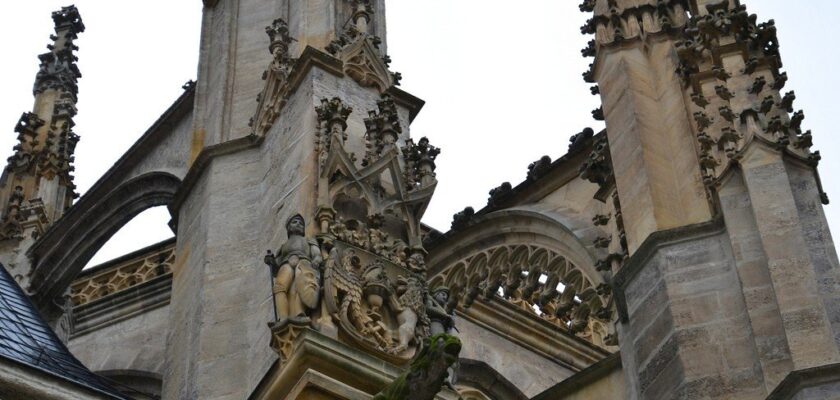St. Barbara’s Cathedral (Chrám svaté Barbory)
St. Barbara’s Cathedral is the most famous church in Kutná Hora, the second largest and most important Gothic church in the Czech Republic, built in the late Gothic style. It is among the most unusual Gothic buildings of this type in Central Europe. St. Barbara’s Cathedral is located on the highest point of the city and is therefore the main landmark in Kutná Hora.
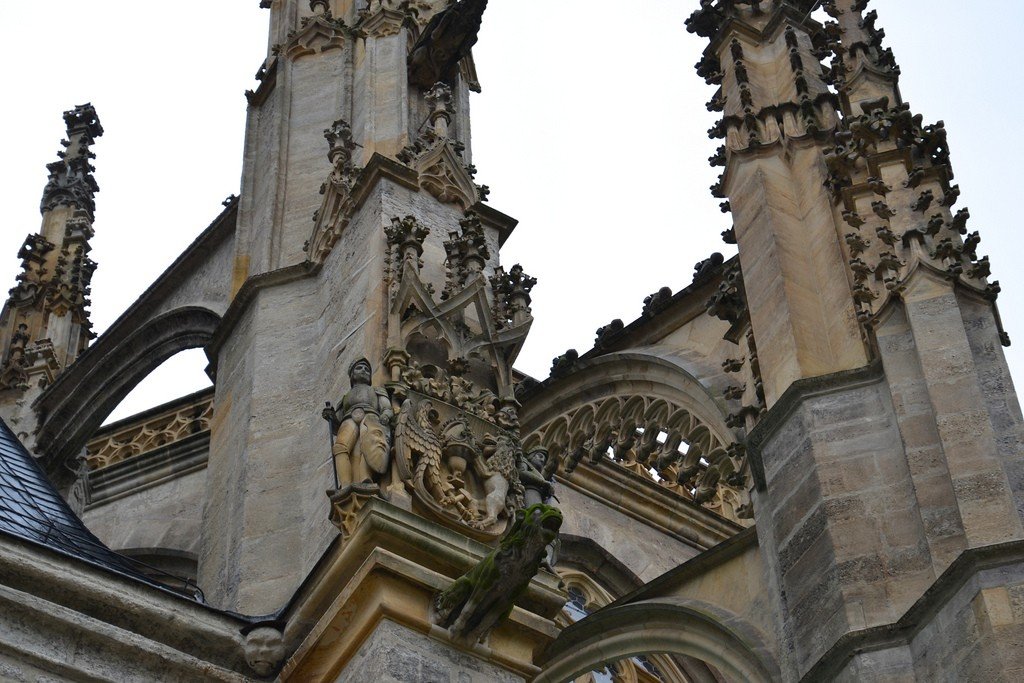
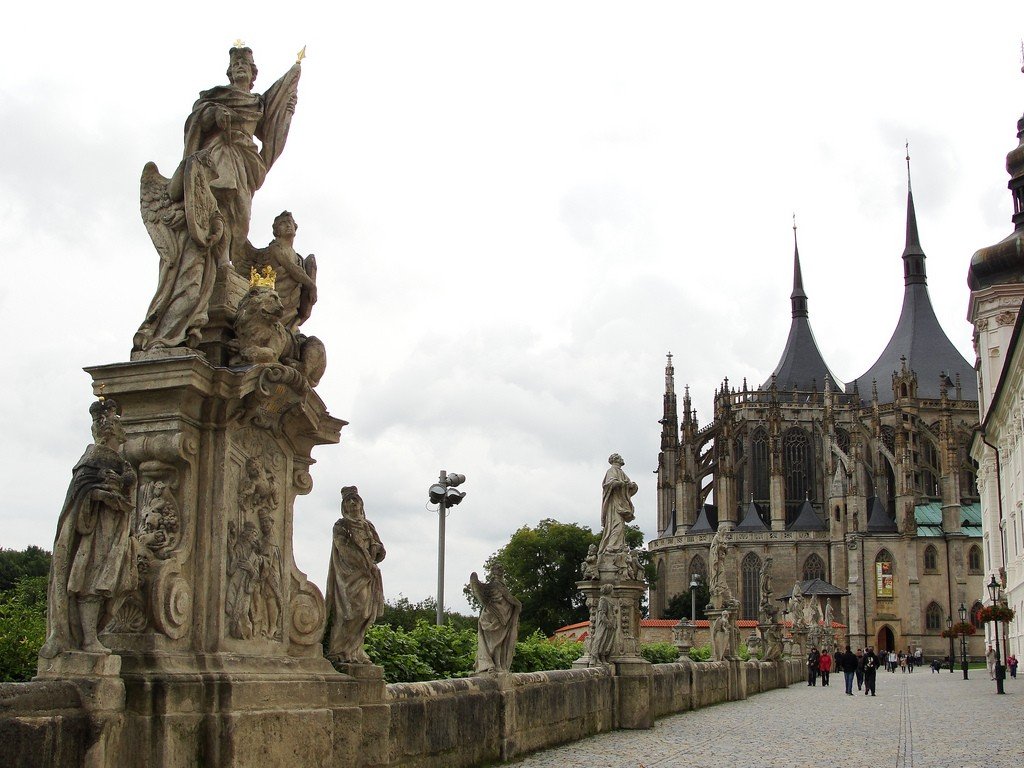
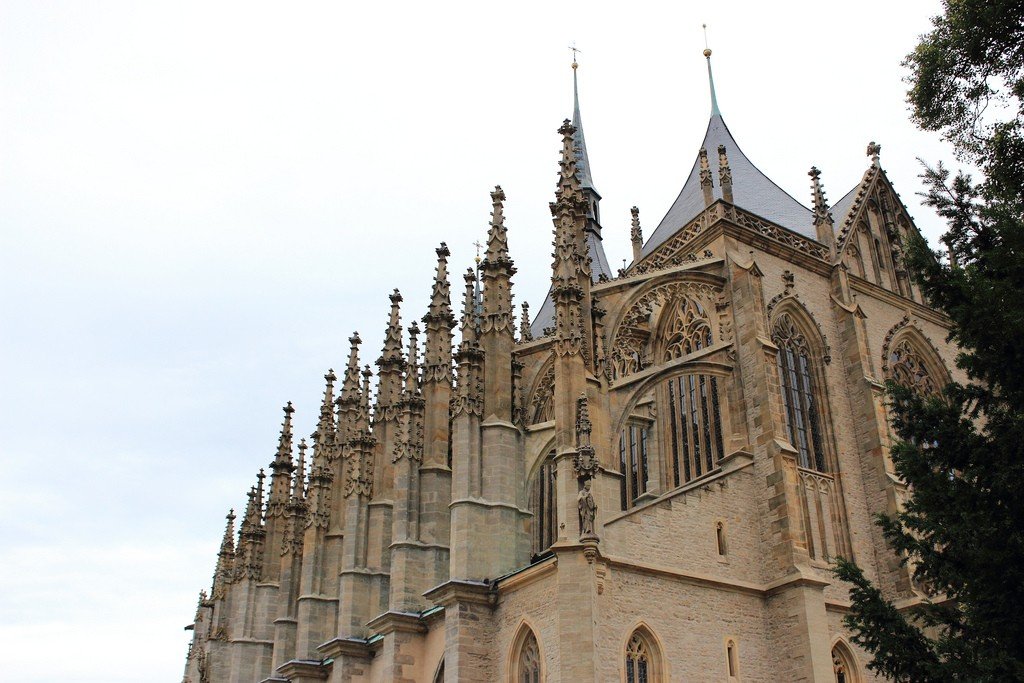
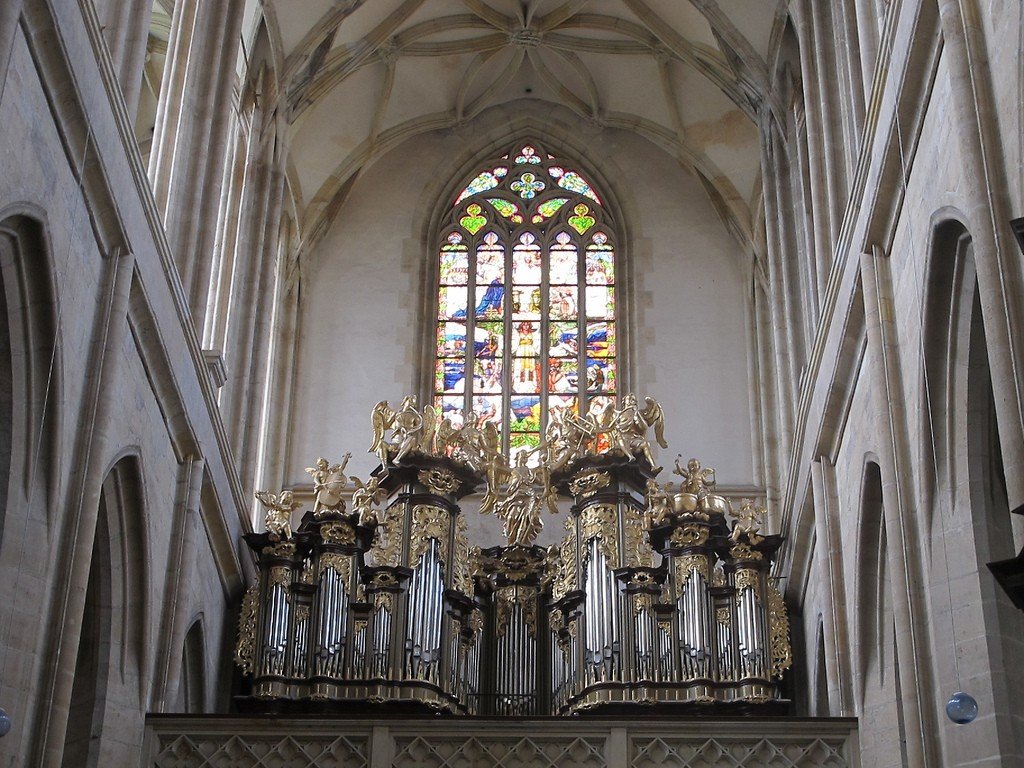
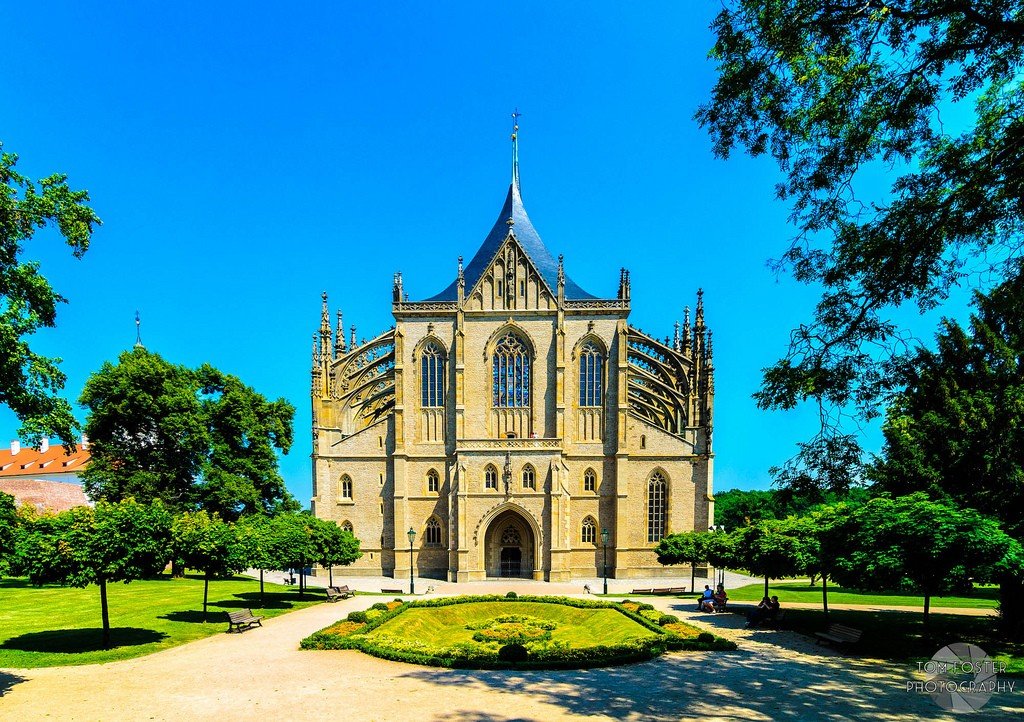
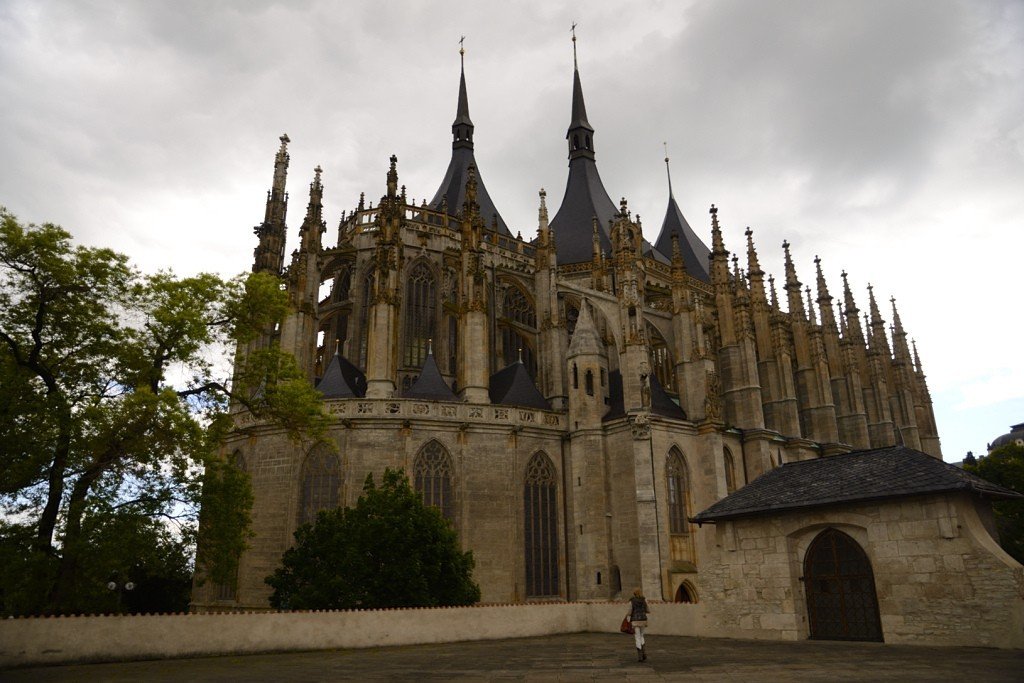
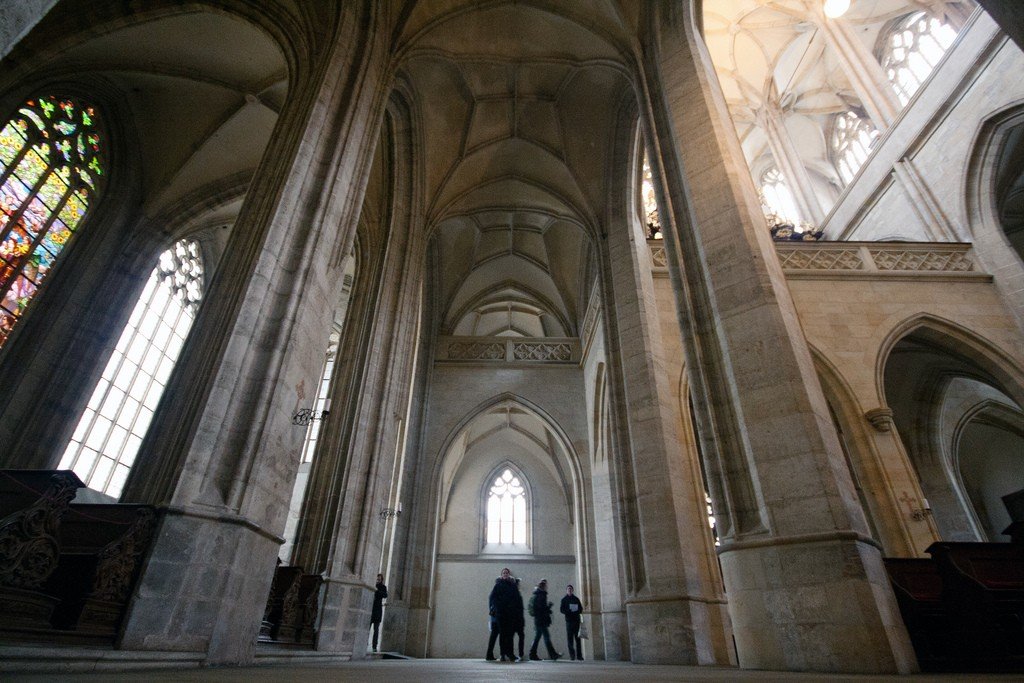
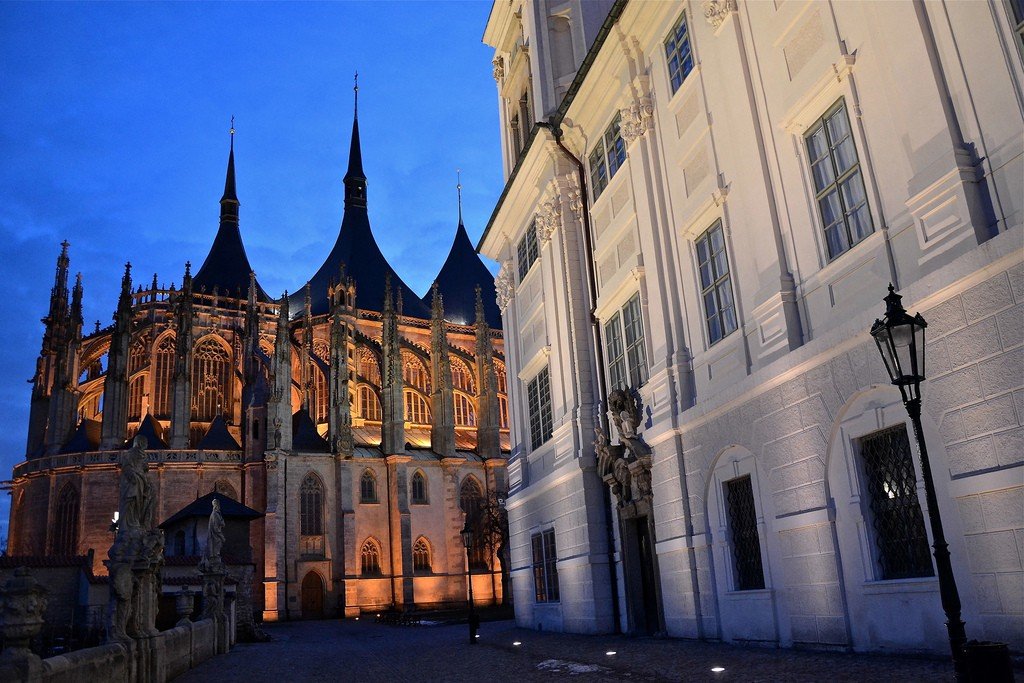
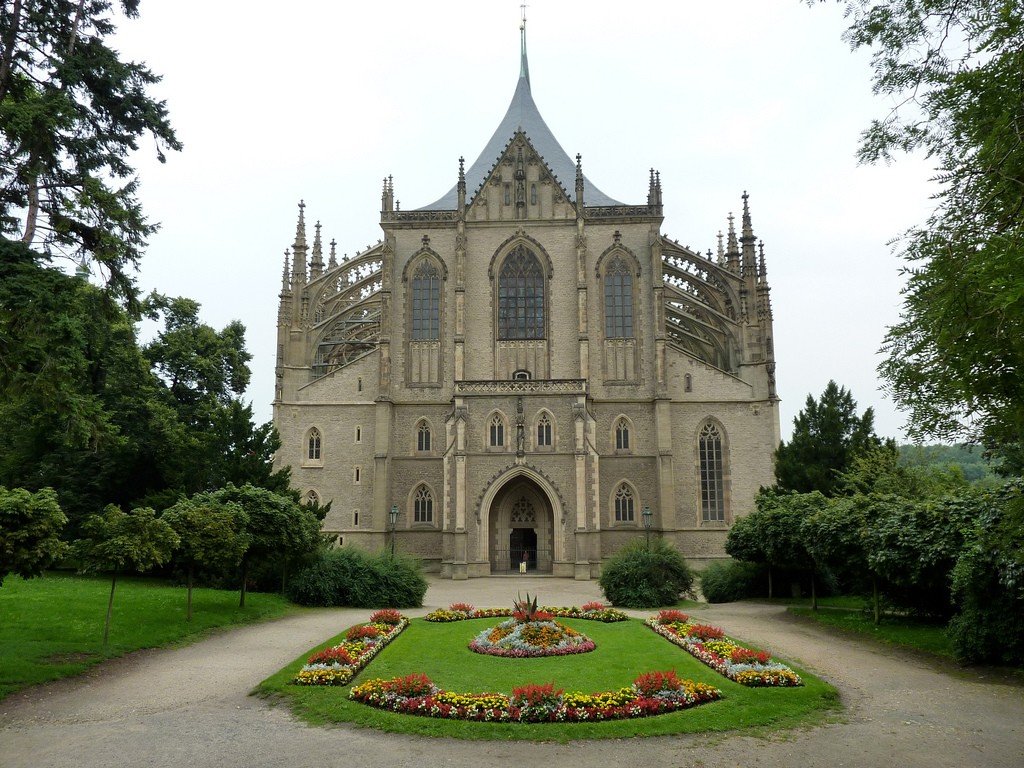
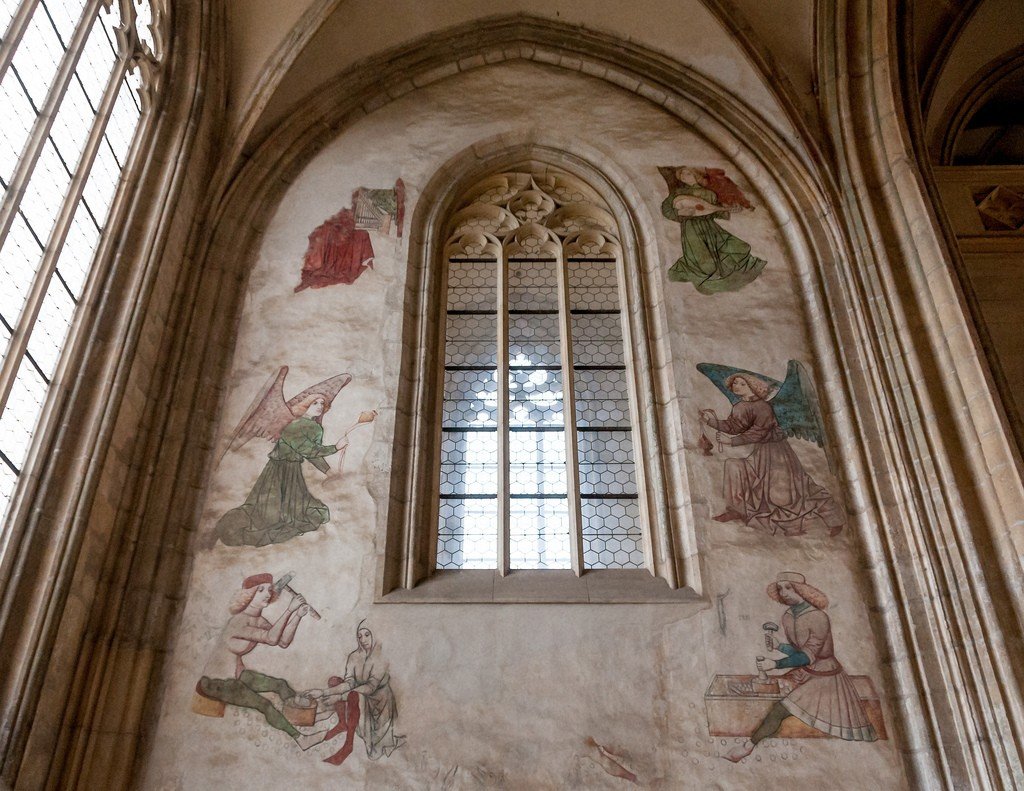
Highlights
The Cathedral of St. Barbara was not built on the order of some religious organizations, or for the liturgical needs of the parish, but as a large representative building on the initiative of wealthy burghers from the town of Kutná Hora. According to canon law it was originally only a chapel. Architecturally, however, it can boldly compete with the cathedral in Prague. It expresses the contemporary tension between Prague and Kutná Hora, as well as between Kutná Hora and the Sedlec Monastery, which had great influence. Thus, the church was built outside the city walls on the land of the head of Prague.
.The building of the cathedral is striking in its monumentality. You can only see it in its entirety if you move a decent distance away. Many turrets and arches support the roof, topped with three hipped towers with uneven sharp spires. The neo-Gothic facades are decorated with rich ornaments.
.
Instead of massive, thick walls that bear the weight of the vault, St. Barbara’s Cathedral is dissected by windows through which light simply pours into the temple. Part of the load from the vault is distributed on the buttresses through the graceful arcs of the arcbutans. Therefore, it was possible to cut through the walls with wide arches of windows.
.
When you walk to the cathedral on the terrace along the steep cliff, you do not pay attention to anything else. The eye skips past the views of the city from the top of the hill, passes through the figures of saints on the edge of the terrace, and focuses only on the cathedral.
.
Inside, the cathedral is as striking as the outside. Artful floor ciotes, mesh vaults, colored stained glass of huge windows, intricately refracting light, frescoes of chapels, telling about the life of miners, intricate cornices, ancient organ, choir oak pews, decorated with carvings – you can look at all this for hours, admiring the filigree work of masters. Concerts of organ music are held in the cathedral building.
.Decorations of the cathedral
In the altar of St. Barbara’s Cathedral is a late Gothic pastophorion from the workshop of Matthias Reiseck, which belongs to around 1510. The choir benches are decorated with carvings by master carver Jakub Nimburk.
.
Remarkable and unique in Czech medieval art are the preserved late Gothic frescoes with a mining theme in some of the chapels of the cathedral. For example, in the Hašplír chapel one can find an illustrated work with a winch. In another chapel, medieval coinage techniques are depicted on the walls. However, the most unique decorations are in the Smiškovka chapel (1485-1492), depicting typologically the scenes “The Queen of Sheba comes to King Solomon, the judgment of Trajan and the Crucifixion.” In the lower part of the chapel, these scenes are complemented by an even more remarkable painting of the “littérati” – the preparation of liturgical devices for worship. The artist who created these paintings was not only very capable, but was also well informed about contemporary Italian painting.
The most beautiful parts of the exterior of St. Barbara’s Cathedral are the sculptures that are found in the highest part of the building, especially on the buttress. In addition to the flower turrets mentioned above, one can find a variety of depictions of fauna and flora, satirical figures, demons and mythical creatures.
.
History
The history of the erection of the temple is noteworthy. It is replete with interesting moments, in it arise, it would seem, at all unexpected parallels. In St. Barbara’s Cathedral you will once again encounter the work of the masters whose creations adorn iconic places in Bohemia.
.
The beginning of construction dates back to the end of the 14th century. The silver-rich Kutná Hora sought to compete not only with the neighboring Cisterian monastery, but even with the capital itself. It was not without reason that the architects of St. Vitus Cathedral in Prague also had a hand in the local church. The design of the church was changed many times. And how many architects worked on its construction! After all, it was built for more than 500 years! To begin with, the son of the famous Peter Parlerz, whom we mentioned in Kolín, Jan, was the first designer of the church. He planned for the cathedral to be twice as long. But financial difficulties and then the outbreak of the Hussite wars pushed back any building work for almost a hundred years. From 1482 work more or less resumed, local craftsmen even tried to follow the original design.
.
But the real breakthrough in the construction of the temple is associated with the name of Matvej Rejsek, a Prague master who first worked as a drawing teacher at the Týn School in Prague. And already in the capital he tried his hand at architecture – he took part in the creation of the Powder Tower. Reysek covered the Kutná Hora Cathedral with the vault. (The picture clearly shows the grid vault of the presbytery – Rejsek’s creation, 1499.) Matvej died in Kutná Hora in 1506 and work on his projects continued for another six years.
. In 1512 Benedict Reith arrived in Kutná Hora from Prague. He already had the Vladislav Hall in Prague to his credit. The vault with which he covered the palace hall in Prague Castle was the largest unsupported secular structure in Europe. He also proved himself a brilliant master in Kutná Hora. It is believed that in the construction of the Church of St. Barbara the architect used his unrealized design for the vault of the Cathedral of St. Vitus. The builder boldly changed the design of the basilica from a five-nave basilica to a three-nave basilica and closed it with a vault with ring-shaped ribs. Nowadays we can see the creations of both masters: Matvej Rejsek and Benedikt Reit. (The photo shows Benedikt Reit’s lap vault)..The next page in the history of the temple was written by the Jesuits. They modified a lot of things in accordance with the prevailing Baroque style of the time, which emphasized the greatness and power of the Catholic Church. However, the Jesuit texts inscribed in the stone book of the cathedral have hardly survived.
.
Again – for many decades no entry was made in the stone record of the temple’s construction. The last point in the history of the creation of the cathedral put only in 1905. And since the 50s of the XX century – begins a gradual, step-by-step restoration. During the restoration work were discovered new, hitherto unknown writings with the names of artists, architects, striking data about the technology and the course of construction of the cathedral..
Since 1995 the cathedral has been a national cultural monument, and in December 1995 it was inscribed on the UNESCO List of World Cultural and Natural Heritage.
.Practical information
Ticket price:.Children’s and for students: 40 CZKAdult: 60 kroner
Opening hours of St. Barbara’s Cathedral:Monday-Sunday: 10:00-16:00 from November to MarchMonday-Sunday: 9:00 a.m.-6:00 p.m. from April through October
>How to get there
St. Barbara’s Cathedral is located at Barborská ul., 284 01 Kutná Hora, Česká Republika
.GPS coordinates – W: 49° 56′ 42″/D: 15° 15′ 49″
.There are many ways to get to the cathedral from Kutná Hora itself. Firstly, there is a tourist bus that runs from the train station in the city center and the historical part of Kutná Hora. You can also use the services of city buses and cabs. If you wish, you can walk. The length of the entire city is about 3 kilometers (which is not much) and walking will bring a lot of bright impressions and leave many memories of the city and its sights.
.
You can get from Prague to Kutná Hora (66 km) by rail, intercity bus or by car (by D11 to exit 39 Poděbrady-South and then by highway No. 38 through Kolín), or as part of an organized tour.
.